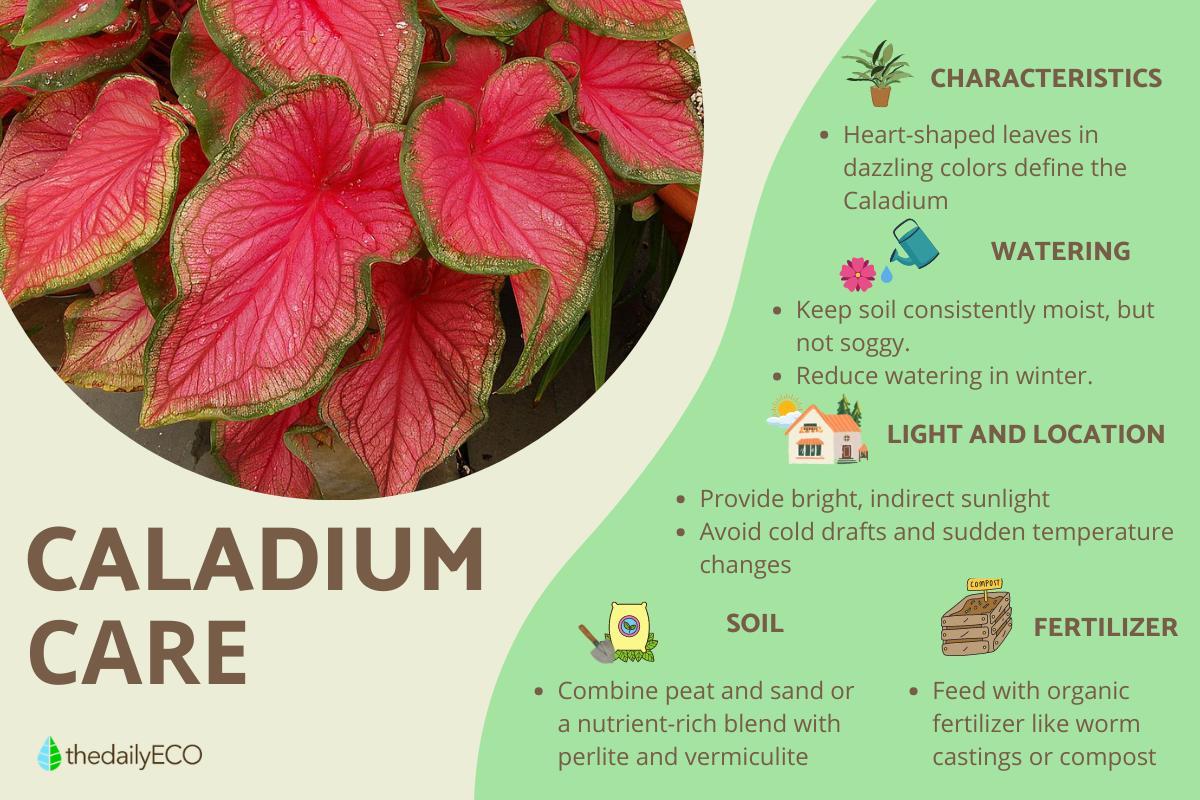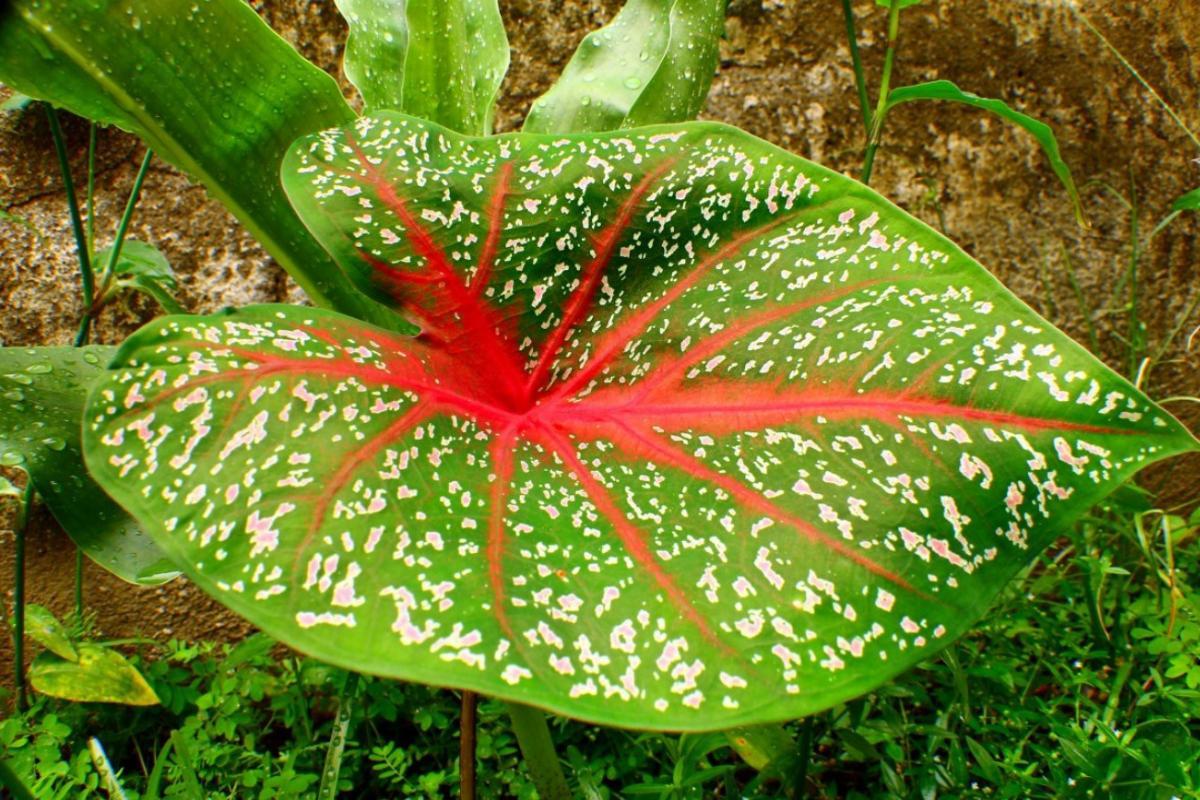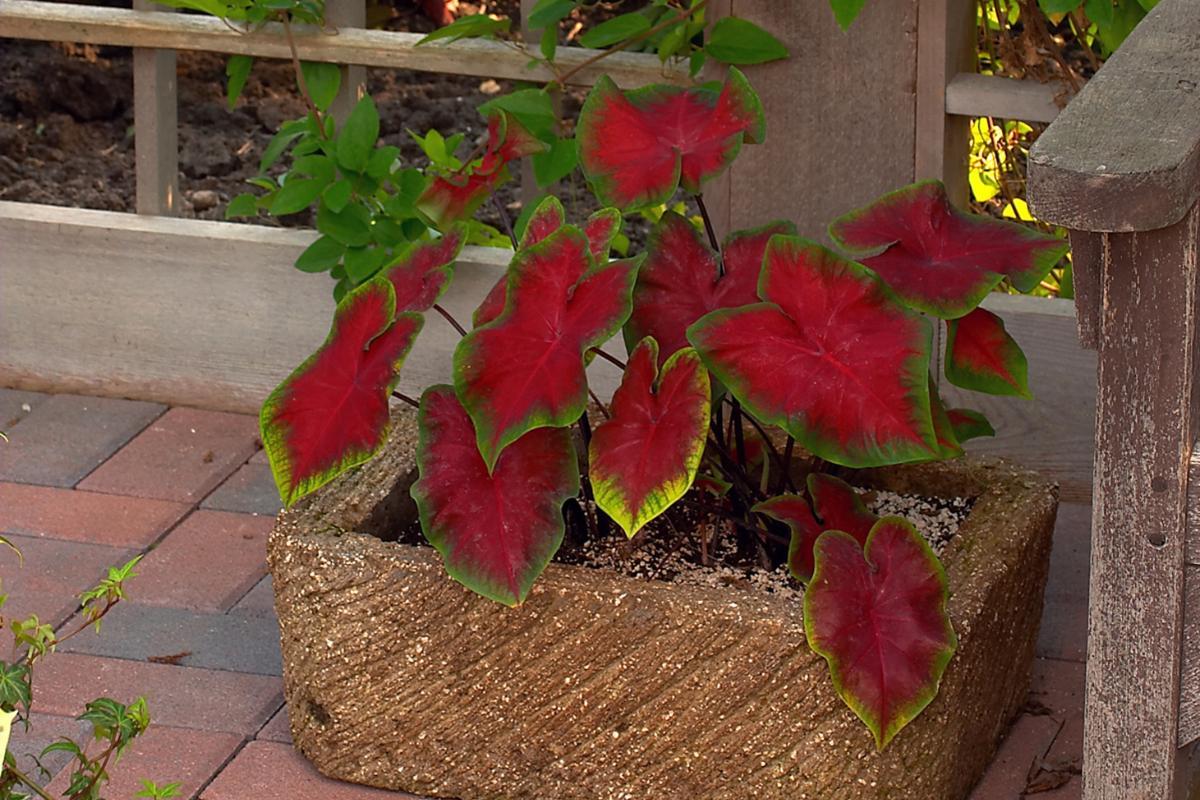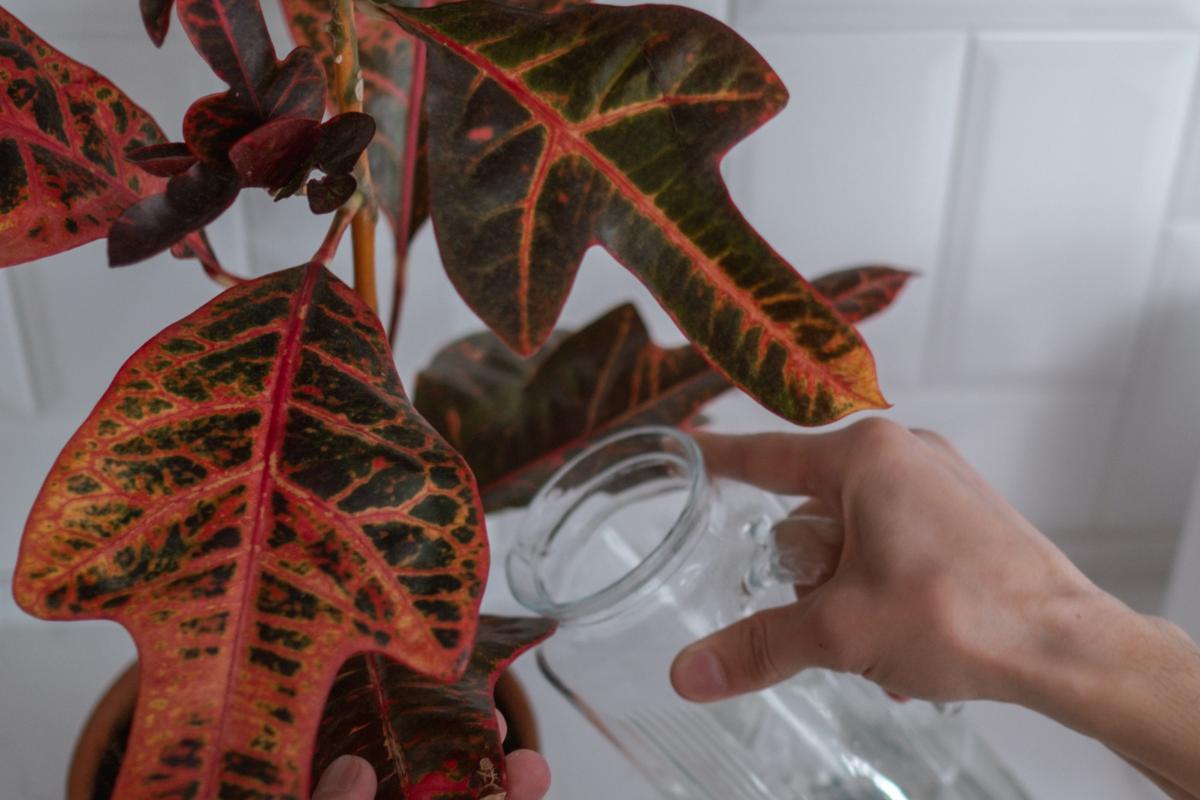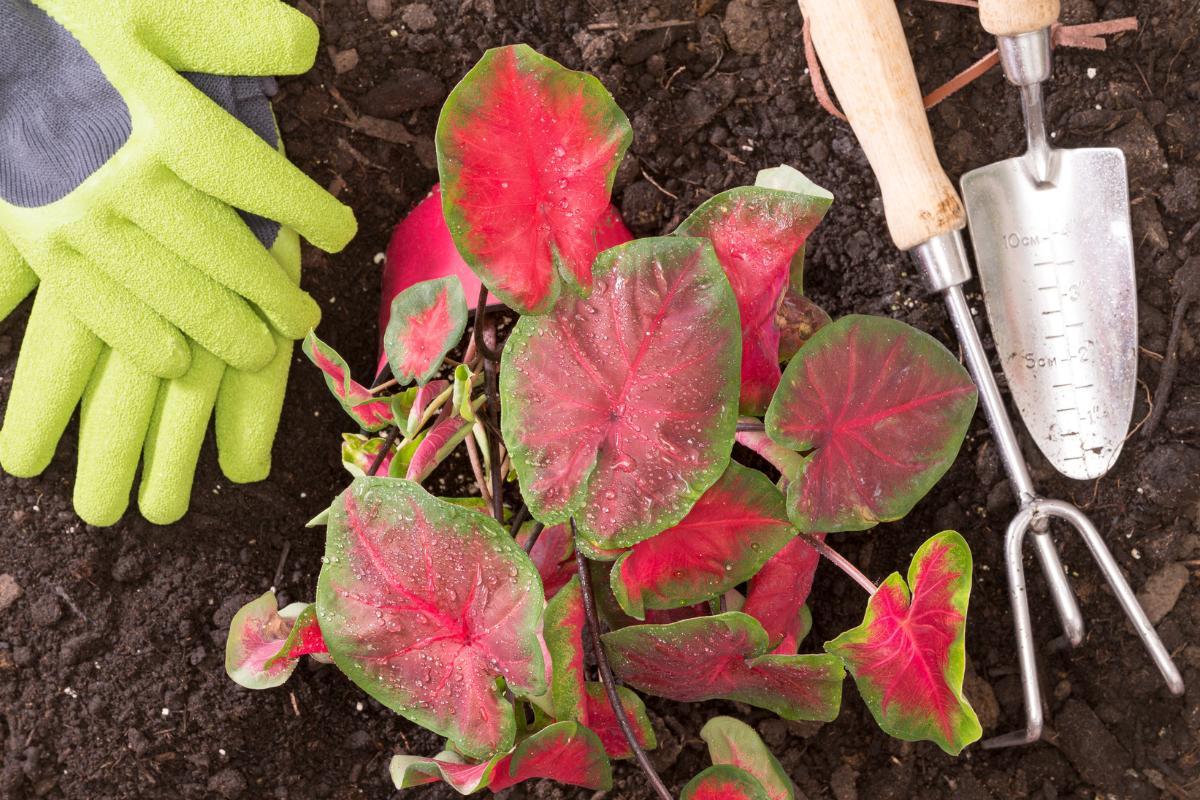Caladium Plants - Care, Watering and Propagation


Caladium is a genus of flowering plants in the family Araceae. Captivating hearts with their vibrantly colored, heart-shaped leaves, Caladiums have become a darling of the indoor plant world. These tropical beauties bring a touch of exotic elegance to any space, but like all living things, they need proper care to thrive.
The following article by thedailyECO explains how to care for Caladium, from watering and light to propagation and troubleshooting potential issues.
Characteristics of the Caladium
Caladiums are tuberous or herbaceous plants known for their distinctive heart-shaped leaves. Some varieties have unique features like speckled leaves or ruffled edges. With over 1,000 variations in color and shade, they offer a diverse range of options to brighten any space.
Caladium bicolor is a popular choice for home cultivation. Most varieties reach heights of around 30-50 cm, making them suitable for indoor spaces. These plants originate from Central America, Brazil, and Guyana, bringing a touch of exotic flair to your surroundings.

Location for the Caladium
Originating from the lush Amazon rainforest, the caladium has specific light requirements that play a crucial role in its well-being. Optimal care involves placing the plant in a well-lit area but shielded from direct sunlight, such as windows.
Insufficient light can diminish the vibrant colors of the caladium's leaves, while exposure to direct sunlight may lead to undesirable burning. Skillful positioning is essential, marking one of the initial challenges in nurturing this delicate plant.
When kept indoors, it's imperative to position the pot away from artificial heat sources like radiators, stoves, or fireplaces. These sources can induce excessive environmental dryness, potentially causing significant harm to the caladium. Careful attention to light and environmental conditions ensures the health and visual appeal of your cherished caladium plant.

Temperature for Caladium
Maintaining the right temperature is key to happy, healthy Caladiums. These tropical plants prefer a stable environment around 21°C (70°F), and don't like extremes. They get stressed by cold temperatures and even struggle with occasional spikes above 30°C (86°F).
Indoor cultivation is often the best solution. This ensures a controlled environment, especially in regions with unpredictable climates outside the Caladium's comfort zone. By providing the right temperature indoors, you can retain the stunning colors and patterns characteristic of Caladiums.

Watering and humidity for the Caladium
Proper watering is crucial for keeping your Caladium's stunning foliage vibrant. Here's a simplified guide:
- Aim for consistently moist, not soggy, soil. Think damp sponge, not soaked towel.
- Avoid the "drench and neglect" approach. Frequent, light watering is better.
- Adjust watering based on season. So, for example, water more frequent in summer, less frequent in winter when the soil can dry slightly between waterings.
- Rolled-up leaves usually mean "thirsty." Water lightly until the soil is moist.
Finally, during warm months or if your Caladium seems dry, use a pebble tray for indirect humidification. Place the pot on a tray filled with pebbles and water (water shouldn't touch the pot). Evaporation creates a humid microclimate around the plant. Change the water twice a week to prevent stagnation.

Substrate for Caladium
Establishing a healthy foundation for your Caladium begins with the crucial element of the right potting mix. As with most plants, optimal drainage is paramount for its well-being.
On the one hand, for a classic and reliable choice, mix equal parts peat and sand. This tried-and-true combination guarantees excellent drainage, preventing waterlogging that can harm your Caladium.
On the other hand, for a more comprehensive approach, combine equal parts peat moss, worm castings, and coconut coir. These organic ingredients provide essential nutrients while maintaining good drainage.
To further enhance drainage and aeration, add a handful of perlite and vermiculite each. This improves the lightness and air circulation within the soil mix, creating an ideal environment for your Caladium's roots.
Want to take your Caladium care to the next level? Learn about the ultimate nourishment in our other article on differences between compost and fertilizer.

Fertilizer for the Caladium plant
Now that we've established a well-draining substrate for your Caladium's roots with the perfect potting mix, let's turn our attention to its nutritional needs.
Unlike some plants that require consistent feeding, Caladiums thrive with a more targeted approach to fertilization. In other words, they require nutrient boosts at specific times of the year to maintain their stunning foliage, specifically, at the beginning and end of summer.
In terms of the type of fertilizer, we recommend:
- Worm castings: bursting with nutrients and beneficial microbes, they promote healthy root growth and improve soil structure.
- Bokashi: This fermented organic matter provides a slow, steady release of nutrients, minimizing the risk of overfertilization.
- Compost: A readily available and versatile option, compost offers a balanced blend of nutrients for overall plant health.
Sprinkle approximately two centimeters (¾ inch) of the fertilizer around the base of the pot, avoiding direct contact with the stem. Finally, water thoroughly to gently incorporate the fertilizer into the soil.
Nourish your Caladiums the eco-friendly way by reading this other article on best homemade organic fertilizers for the garden.
Reproduction of the Caladium
Now that we've covered the essential aspects of Caladium care, let's explore how to reproduce these plants.
The most effective and beginner-friendly method for Caladium propagation is division. This involves carefully separating the tuber into multiple smaller plants, allowing you to expand your collection.
For optimal results, perform division during spring, when the Caladium tubers are vibrant and full of stored energy. Remember that these plants experience a dormant period in colder climates. If this applies to your region, carefully dig up and store the tubers in a protected environment like a greenhouse during this time.
Before digging, locate the largest central bud on the tuber. Using a sterilized, sharp knife, make a clean cut to separate this bud, which will develop into a new plant.
Replant the divided tubers in well-draining soil during dry weather, typically in spring. With proper care, you'll soon see new Caladium plants emerge. Provide them with the same care you offered the parent plant, including appropriate watering and light conditions, to ensure their healthy growth and development.
With patience and proper technique, you can successfully propagate your Caladium and enjoy the satisfaction of multiplying its captivating beauty.
Discover the fascinating secrets of how Caladiums (and other living things!) multiply in our article on asexual reproduction in plants and animals.
If you want to read similar articles to Caladium Plants - Care, Watering and Propagation, we recommend you visit our Plant care and cultivation category.





